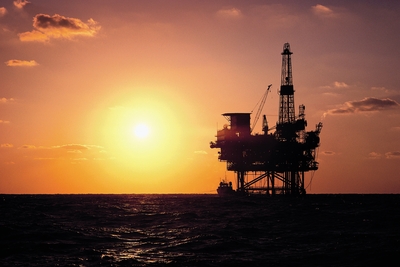21st-century oil: hard to find, hard to produce
Monday, 11 February, 2013
UK energy expert Chris Rhodes sees no easy path to fulfilling oil demand. “The big, easy-to-find fields have been discovered and are now mostly depleted,” he explains.
Remaining reserves are thought to lie mostly under the sea rather than onshore, and new fields will be smaller than previous discoveries, situated in more difficult environments and where oil will be more challenging to produce.
The offshore oil industry learned its game in relatively shallow waters. Down to about 200 metres it is possible to fix a steel platform to the seabed.
“But further out you have to start using floating rigs, which are moored to anchors on the seabed,” Rhodes says. “The deepest so far is Shell’s Perdido spar platform, a floater located in 2500 metres of water in the Gulf of Mexico.”
Operations in depths of 2000 to 3000 metres are subject to problems not encountered in shallow waters.
“For every 10 metres you go down, the pressure increases by one atmosphere,” Rhodes says. “At 3000 metres, the pressure is enormous - 300 times what it is at the surface.” Equipment has to be specially designed and reinforced if it is to run efficiently under such pressure.

Because of the many challenges involved in extracting oil from such depths, new production methods are being examined. “Rather than pump the oil and water mixture that comes out of the well to a processing facility at the surface, some oil companies are looking to perform processing on the seabed,” says Rhodes.
Companies such as Shell and Norway’s Statoil are looking to create seabed oil processing plants. This is a worthwhile objective, Rhodes says, but a daunting challenge, involving running an industrial plant on the seabed from a control room many kilometres away. For a start, all the equipment must be highly reliable.
Drilling is also problematic in deep waters. The drill string to which the drill bit is attached is made up of interlocking sections of pipe that weigh 30 kg per metre. When a rig has five kilometres of drill pipe slung beneath it, that adds up to a weight of 150 t. “Engineering is needed to find ways of supporting this weight at the surface,” Rhodes explains.
Trying to hit oil with the drill bit is no easy task at the best of times, as it involves drilling three to five kilometres on average through layers of rock and sand. “But now we are increasingly going twice that distance,” says Rhodes.
The deeper you go, the tougher conditions get, as both pressure and temperature increase to quite extreme proportions. Such conditions create significant technical challenges, including extreme mechanical stresses on equipment. One solution is to use specialist alloys, but such alloys are expensive.
Huge discoveries have been made by Petrobras in the pre-salt layer (a geologic formation of rock deposited prior to the salt layer) off the coast of Brazil. Drillers here face a tough task: from a rig floating in some 2000 metres of water, they have to drill through 3000 metres of rock and then a further 2000 metres of salt before reaching the source rock that contains the hydrocarbons. And salt poses its own problems, Rhodes says. At high temperatures it starts to flow, closing up the well bore.
The search for oil is also moving into areas with more extreme weather. This calls for drilling rigs that are better able to withstand the rigours of operating in such a demanding environment. Oil companies are looking increasingly to the Arctic, where geologists believe large oil and gas reserves are situated. Operations here face particular problems, such as sea ice, unbroken darkness in midwinter and extreme cold. Rigs have to be specially winterised to operate in such conditions.
The cost of failure can be high. Today a well can cost from $100 million to $200 million - a lot of money wasted if it turns out to be a dry hole.
To help drillers find the sweet spot, further advances are needed in the geophysical sciences and in technology - for example, multidimensional seismic imaging to provide a rough 3D image of the rock beneath the seabed. Immense amounts of data about the subsurface are collected in seismic surveys to throw light on where hydrocarbons might be located. Advances are needed in analytical programs and computational ability in order to maximise the information that can be extracted from the data, says Rhodes. “Technology development is the key if we are to go on finding oil,” he says.
*Chris Rhodes
Trelleborg
Solar-powered desalination system requires no additional power
MIT engineers have built a new desalination system that runs with the rhythms of the sun.
Climate-friendly electricity from ammonia
Researchers the Fraunhofer Institute have developed a high-temperature fuel cell stack that can...
Digitalised, sustainable battery cell production
German researchers have developed a flexible winding system for battery cells that is embedded in...












